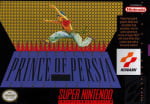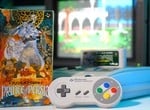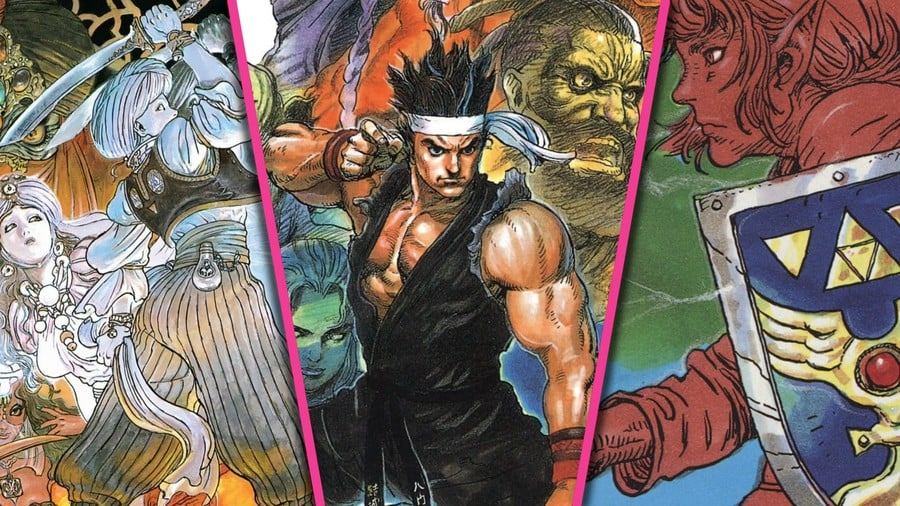
Katsuya Terada is a Japanese illustrator and artist whose work has spanned many mediums over his impressive four-decade-long career.
Initially starting out in the world of advertising, following his graduation from Tokyo's Asagaya College of Art and Design, he has since gone on to contribute artwork to countless video games, films, TV shows, and manga, developing an art style that is a melting pot of different inspirations, drawing influence from classic manga, old Japanese film posters, and Franco-Belgian comics.
In the past, he has created the cover artwork for numerous titles (including Data East's Japanese exclusive Detective Saburō Jingūji, the Super Famicom version of Prince Of Persia, and the Sega Saturn title Virtua Fighter Remix), and has also had his work featured extensively in Nintendo Power, as well as various strategy guides. In this capacity, he has gotten to work on a lot of famous video game series over the years, reimagining the art of countless games in his own style, such as Dragon Warrior, Final Fantasy II (IV), and The Legend of Zelda: Link's Awakening.
Last year, we reached out to Terada-san while trying to put together a retrospective feature on Prince of Persia for the SNES, with our hope being to chat with Terada-san about his work on the game's iconic cover. However, over time, we decided it was probably for the best that we expand the scope of the interview further, to touch upon some of his other brilliant work elsewhere. Terada-san was kind enough to oblige, answering some of our questions about his general approach to art, his work for Nintendo, and how he ended up getting a job on Virtua Fighter 2. You can read our below, which has been translated for us by the Japanese to English translator Liz Bushouse.
Time Extension: You’ve said before that the French artist Mœbius was a huge influence on developing your style. Do you remember how you were first introduced to his work?
Terada: I first saw one of Mœbius's paintings when I was 15 years old. I came across it in a small introductory article in a monthly Japanese Science Fiction magazine. It was then that I first realized that the world was made up of Mœbius lines.
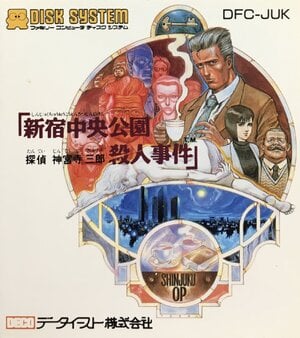
Time Extension: In the past, we’ve read that you got a job working on the NES/Famicom game ‘Detective Saburō Jingūji’ thanks to the illustrator Toshio Nishiuchi. How did you meet him? Did he also attend Asagaya College of Art and Design at the same time as you?
Terada: (laughs) Toshio Nishiuchi-san is a children's animator and four years older than me. While I was in school, he was already working. However, by chance, it turned out that someone he graduated at a similar time to was teaching a video seminar at the school and I met him there during a visit. He was working on Detective Saburō Jingūji but his style didn't match the hard-boiled worldview of Jingūji, so he recommended me for the job. I'm still good friends with him.
Time Extension: Were you a fan of video games prior to working on Detective Saburō Jingūji’?
Terada: Yes, but I wasn't what you'd call an avid gamer, and I didn't own an NES even after I started working on Jingūji.
Time Extension: We’re wondering, can you remember the first time you played Legend of Zelda? Had you played the game before getting the Nintendo gig?
Terada: I hadn't actually played any Zelda games. However, I was already familiar with the worldview of the game from Japanese game magazines at the time.
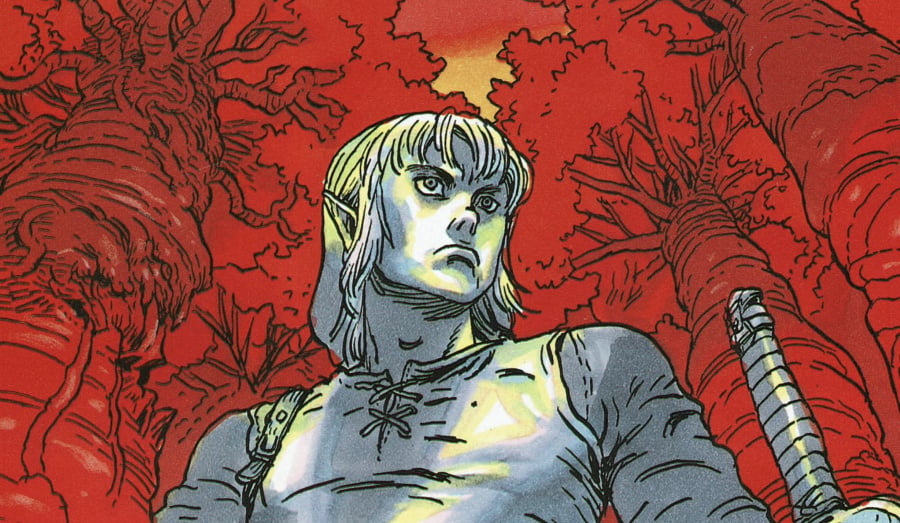
Time Extension: Did Nintendo give you any specific guidelines for working with its characters like Zelda? Or were you established enough at that point to have total freedom to explore your ideas without objections?
Terada: Back then, the game industry wasn't as strict about managing characters as it is now, so I could basically do whatever I saw fit with my work on Nintendo Power. I remember being free to draw what I wanted. And because Famicom games had such a low resolution, I had that much more room to exercise my imagination.
That said, I was aware that my job was to translate the world of Zelda into a more realistic language, as it were, so I made sure not to deviate too much from the original visuals. Thankfully, I became known as someone who could depict fantasy in a realistic way, so I'd say my work on Zelda was a success in that sense.
Time Extension: Are there any other Nintendo characters that you would love the chance to reinterpret in your own art style?
Terada: That's a good question. None immediately come to mind, though. Oh! I liked Metroid a lot, so it might be nice to draw something from that if I got the opportunity to do so for work.
I liked Metroid a lot, so it might be nice to draw something from that if I got the opportunity to do so for work.
Time Extension: Your artwork always contains a really striking use of colour that feels more abstract than realistic. Do you have any insight into how you developed this aspect of your work? Or how your approach to colour has maybe evolved over time?
Terada: As you know, my artwork isn't aiming to be photorealistic. I do take some artistic liberties. If I were to attribute that to any past artist, I'd say I was greatly influenced by Japanese manga. One of the fundamental aspects of artistic expression in Japanese manga is the way they play with visuals in order to fully convey a story. I think that sort of thing became part of my core.
In regards to colour specifically, I more often than not feel like I'm lacking. It's a process of daily trial and error, which I feel is important. I think the ones that really do colour well are Japan's ukiyo-e paintings and France's Bandes dessinées (Franco-Belgian comics).
Time Extension: Are there any specific designers or poster artists that helped inform your approach to composition? To us, the Prince of Persia cover in particular definitely evokes some of the great Hollywood movie poster designers of the past like Bob Peak and Richard Amsel.
Terada: I do really love those two artists, but I think the person who impacted me the most strongly is Noriyoshi Ohrai, a Japanese illustrator. Ever since I was a kid, I saw his dynamic art everywhere: on movie posters, book covers, illustrations, advertisements... And I'd just stare at them, deeply impressed.
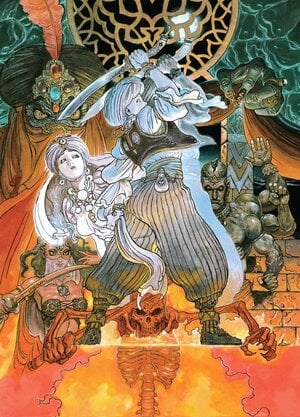
Time Extension: The Prince of Persia cover is obviously based on a specific culture/setting. For pieces like this one, do you typically do a lot of research and reference material to create period-appropriate clothing or do you prefer to create your own unique interpretation of reality?
Terada: I've seen countless movies since I was a kid. I especially liked Harryhausen's movies and was greatly moved by masterpieces like Lawrence of Arabia and The Godfather. At the same time... Well, actually, I loved reading even more than watching movies.
Even when I was really young, I got my hands on more adult-oriented books. It's text that gets your imagination flowing more than pictures, so you could say that I honed my imagination by adventuring in the realm of novels, and developed my visual vocabulary by taking note of how movies depicted historical settings, fashion, and futuristic worlds. I think all of that improved my ability to read and understand the worlds that were offered to me, which bore fruit when I started creating my own style. This is going a little outside the question, but if I were to phrase it in a somewhat self-important way, I'd say that my own visual vocabulary is there inside my head, and I use that as a reference when I want to conjure a certain image. That's especially effective when I'm depicting worlds that don't exist in reality. My job is largely divorced from reality, but I usually depict things that seem real, so I press forward with that in my own way by reconstructing reality.
Also, I think it's vital to file things away in your visual library and then make it a regular habit of looking at them, touching them, and depicting them.
Time Extension: We’re curious, how did the opportunity arise to work with Sega on Virtua Fighter 2? How did they become aware of your work?
Terada: There was a person named Mr. Kurokawa who was the PR Manager at Sega AM2, where Mr. Suzuki, who created Virtua Fighter, was at. He had previously worked on Keita Amemiya's Zeiram, which I did costume design on, so we were acquainted with one another from that. Years later, I got a call from him out of the blue, asking me to redesign the characters for Virtua 2. Virtua 1 was already completed, and at one of the release events, they were asked to make the characters more realistic for 2, so that's why I got called up. Mr. Kurokawa said he saw a small picture I had done of a sumo wrestler in a magazine column and decided to ask me to do the job. You never know what's going to lead to a job.
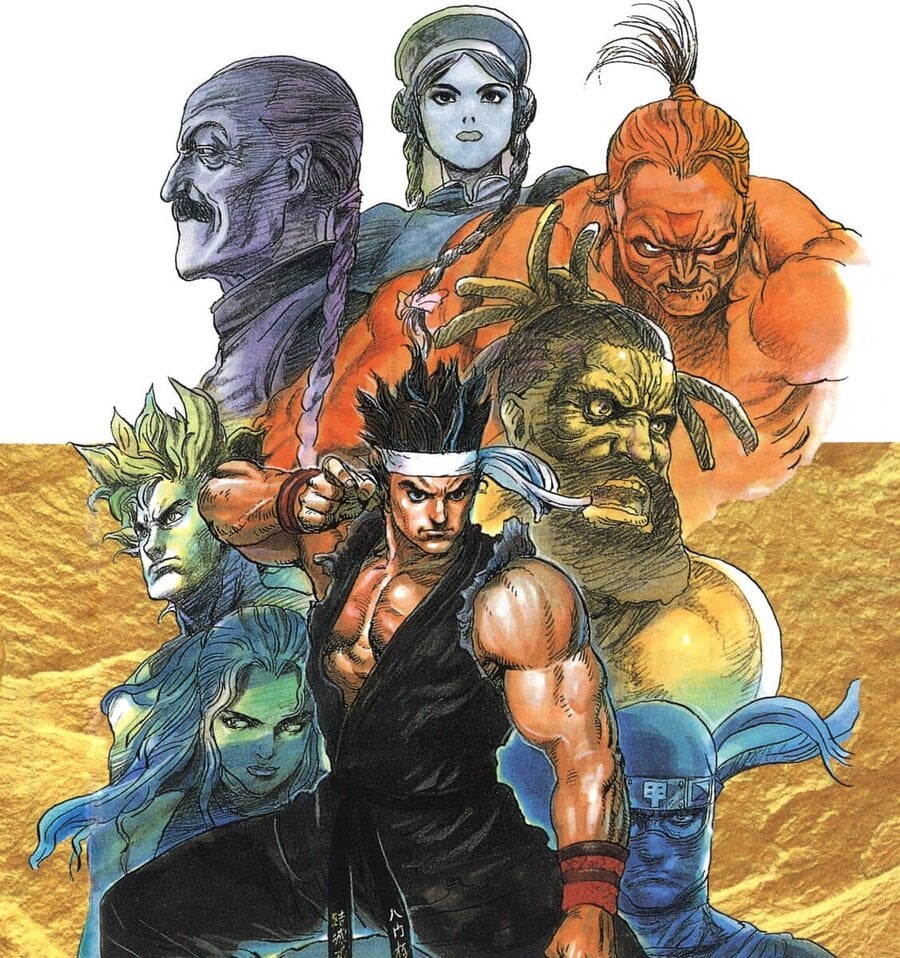
Time Extension: Is it true you got an arcade machine for working on Virtua Fighter 2? Do you still have that machine today?
Terada: That is technically true, but to tell the whole story, they said they were going to give me an arcade cabinet of 1, which I was delighted about, but when it was delivered, it wasn't able to fit through the door of the apartment I had at the time! So they took it back. I cried as I watched it go, but a few days later they sent me a version of it where the screen and controller and interior and all that were disassembled, and set it up in my apartment for me. That apartment had a low voltage, so after starting it up, I had to wait for 30 minutes until I was able to actually play the game, but I was so moved by the gesture that I played it every day. A few years after that, my room got smaller and I sent it back to Sega, so sadly I don't have it anymore.
Time Extension: Finally, we’ve just seen you’re about to finish an exhibition called NO TITLE in Los Angeles this month. Do you have plans for any more exhibits in the near future? Where can people find out more information about your upcoming events and appearances?
Terada: I'm still doing commercial work, but right now I'm also working on exhibitions that feature my artwork, and that work takes up about half of the year.
I do a solo exhibit at Los Angeles's GR2 Gallery every year, and I always have at least one or two in Japan. Recently I've been trying to expand out into other Asian countries, too. You can usually find announcements on my Instagram and X and places like that, so keep an eye out there. Thanks!
Time Extension: Thank you again for your time Terada-san. It's been our pleasure!

